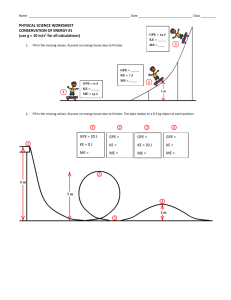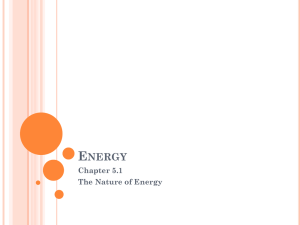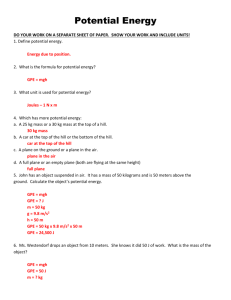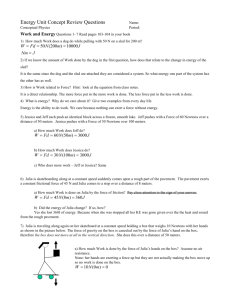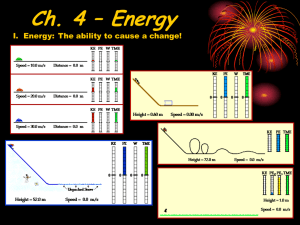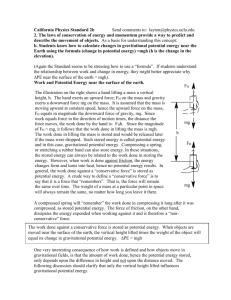TAP 404-1: GPE in a constant field
advertisement
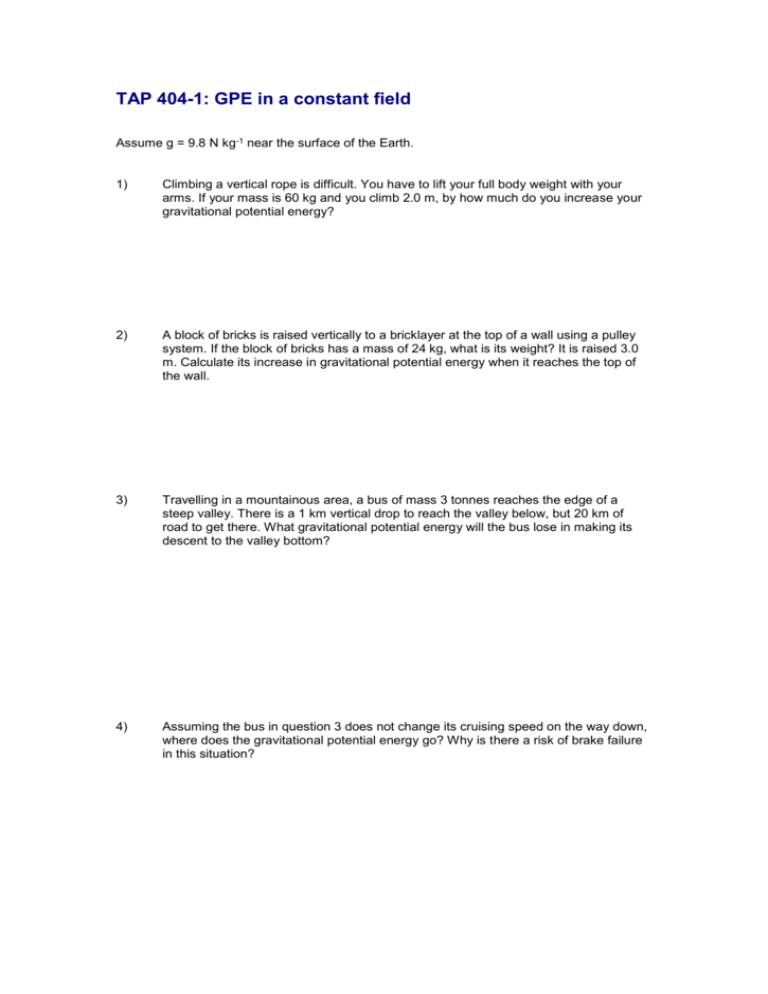
TAP 404-1: GPE in a constant field Assume g = 9.8 N kg-1 near the surface of the Earth. 1) Climbing a vertical rope is difficult. You have to lift your full body weight with your arms. If your mass is 60 kg and you climb 2.0 m, by how much do you increase your gravitational potential energy? 2) A block of bricks is raised vertically to a bricklayer at the top of a wall using a pulley system. If the block of bricks has a mass of 24 kg, what is its weight? It is raised 3.0 m. Calculate its increase in gravitational potential energy when it reaches the top of the wall. 3) Travelling in a mountainous area, a bus of mass 3 tonnes reaches the edge of a steep valley. There is a 1 km vertical drop to reach the valley below, but 20 km of road to get there. What gravitational potential energy will the bus lose in making its descent to the valley bottom? 4) Assuming the bus in question 3 does not change its cruising speed on the way down, where does the gravitational potential energy go? Why is there a risk of brake failure in this situation? Practical advice These are straightforward questions. The questions are available as worked examples or for students to work themselves Answers and worked solutions 1 GPE = mgh = 60 x 9.8 x 2 = 1176 = 1200 J (2sf) 2 Weight = mg = 24 x 9.8 = 235.2 = 240 N (2sf) Change in GPE = mgh = 24 x 9.8 x 3.0 = 705.6 = 710 J (2sf) 3 Change in GPE = mgh = 3000 x 9.8 x 1000 = 2.94 x 107 = 2.9 x 107 J (29 MJ) (2sf) 4 Since the bus gains no kinetic energy (its speed stays the same) it must be using its brakes, and all the GPE lost by the bus in converted to heat in the brakes. There is a risk of brake failure if the brakes overheat. External reference This activity is taken from Advancing Physics chapter 11, 210S


